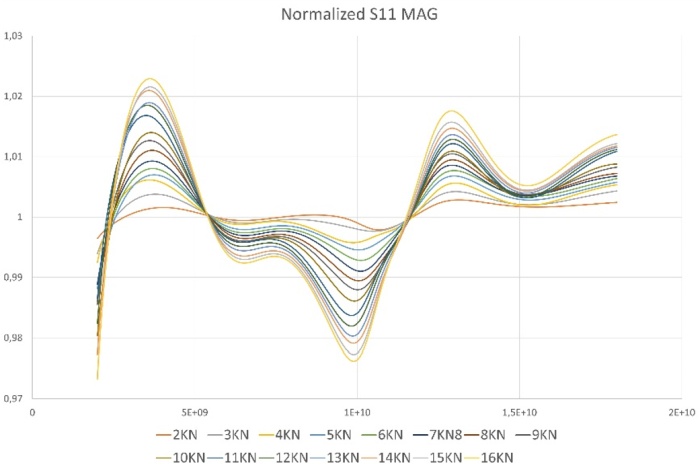Speaker
Description
Magnetic microsensors have been proposed for the monitoring of various processes and functionalities for diverse industries and soft magnetic materials can be used for a large variety of sensors [1]. Amorphous ferromagnetic and nanocrystalline wires show interesting properties for giant magnetoimpedance (GMI) or domain wall propagation. The effectiveness of the GMI is connected to the applied tension [2].
Studies of UPV/EHU have shown that specifically designed anisotropic magnetic fibers show a tension sensitive GMI, adequate for the monitoring of variation in tension and material deformation [3]. Also, in situ studies of the evolution of hysteresis cycle and reflection and transmission parameters were performed during matrix polymerization [4]. Low frequency modulated ac magnetic field was used to distinguish the microwave signal originated by microwires in carbon reinforced composites [5].
In this work, continuous microwires were integrated into a glass fiber reinforced composite (GFRP) coupon. Also, a vector network analyzer (VNA) was coupled to a universal testing machine. Therewith, scattering parameters were determined by means of free space measurements, while simultaneously, test specimens were submitted to tensile stresses.

Fig. 1 Normalized reflection scattering parameter S11.
A clear and strong dependence of scattering parameters with tensile stress has been identified, considered as a baseline for new detection methods to be developed. It allows to monitor, in a non-destructive and contactless operation, glass reinforced composites with embedded continuous ferromagnetic microwires with magnetic sensitivity to tensile stress variation.
Acknowledgements
This work was supported by the EU through “INFINITE” (HORIZON-CL5- 2021-D5-01-06) project, and by the Government of the Basque Country through Elkartek (ZE-KONP and MOSINCO) projects.
References
[1] P. Ripka and G. Vértesy, “Sensors based on soft magnetic materials Panel discussion,” Journal of Magnetism and Magnetic Materials, vol. 215–216. Elsevier BV, pp. 795–799, Jun. 2000. doi: 10.1016/s0304-8853(00)00291-2.
[2] A. Zhukov, M. Ipatov, and V. Zhukova, “Advances in Giant Magnetoimpedance of Materials,” Handbook of Magnetic Materials. Elsevier, pp. 139–236, 2015. doi: 10.1016/bs.hmm.2015.09.001.
[3] A. F. Cobeño, A. Zhukov, J. M. Blanco, V. Larin, and J. Gonzalez, “Magnetoelastic sensor based on GMI of amorphous microwire,” Sensors and Actuators A: Physical, vol. 91, no. 1–2. Elsevier BV, pp. 95–98, Jun. 2001. doi: 10.1016/s0924-4247(01)00502-7.
[4] A. Allue et al., “Smart composites with embedded magnetic microwire inclusions allowing non-contact stresses and temperature monitoring,” Composites Part A: Applied Science and Manufacturing, vol. 120. Elsevier BV, pp. 12–20, May 2019. doi: 10.1016/j.compositesa.2019.02.014.
[5] V. Zhukova et al., “Free Space Microwave Sensing of Carbon Fiber Composites With Ferromagnetic Microwire Inclusions,” IEEE Sensors Letters, vol. 8, no. 1. Institute of Electrical and Electronics Engineers (IEEE), pp. 1–4, Jan. 2024. doi: 10.1109/lsens.2023.3337071.

